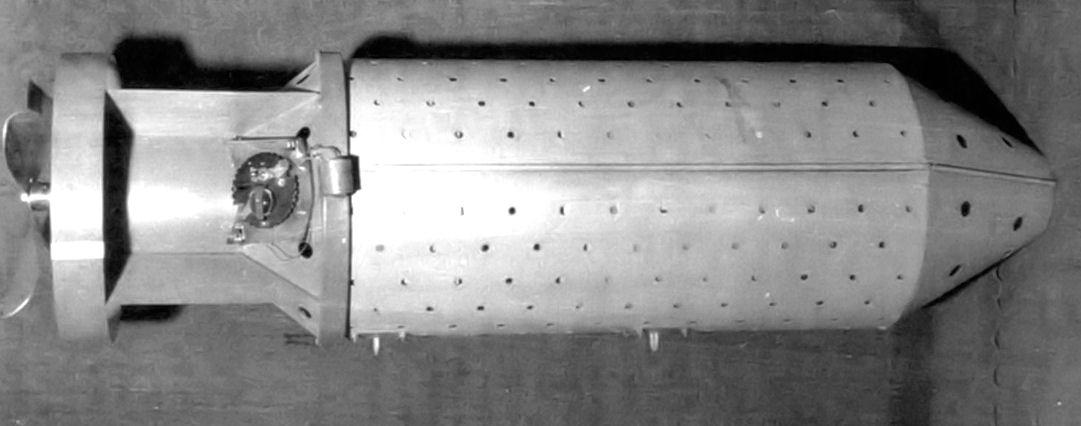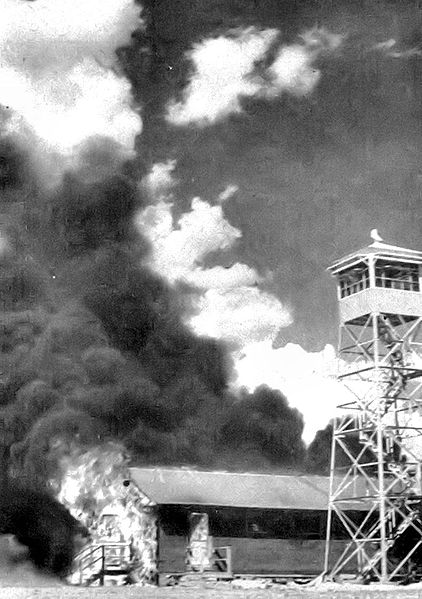188-The Bat Bomb
Futility Closet
Greg Ross
4.8 • 748 Ratings
🗓️ 12 February 2018
⏱️ 33 minutes
🧾️ Download transcript
Summary

During World War II, the U.S. Army experimented with a bizarre plan: using live bats to firebomb Japanese cities. In this week's episode of the Futility Closet podcast we'll describe the crazy history of the bat bomb, the extraordinary brainchild of a Pennsylvania dentist.
We'll also consider the malleable nature of mental illness and puzzle over an expensive quiz question.
Intro:
Ever since George Washington, American presidents have hated the job.
Harpsichordist Johann Schobert composed a series of "puzzle minuets" that could be read upside down.
Sources for our feature on the bat bomb:
Jack Couffer, Bat Bomb, 1992.
James M. Powles, "Lytle S. Adams Proposed One of America's Battiest Weapons," World War II 17:2 (July 2002), 62.
Robert M. Neer, "Bats Out of Hell," MHQ: The Quarterly Journal of Military History 25:4 (Summer 2013), 22-24.
C.V. Glines, "Bat & Bird Bombers," Aviation History 15:5 (May 2005), 38-44.
Stephan Wilkinson, "10 of History's Worst Weapons," Military History 31:1 (May 2014), 42-45.
"Holy Smokes, Batman!" Bulletin of the Atomic Scientists 49:2 (March 1993), 5.
Alexis C. Madrigal, "Old, Weird Tech: The Bat Bombs of World War II," Atlantic, April 14, 2011.
Toni Kiser, "Bat Bomb Tests Go Awry," National WWII Museum, May 15, 2013.
Joanne Grant, "Did They Have Bats in the Belfry? WWII Team Created Novel Bomb to Defeat Japan," [Bergen County, N.J.] Record, Oct. 27, 1996, A31.
"Air Force Scrapped Top Secret 'Bat Bomb' Project in Carlsbad 70 Years Ago," Carlsbad [N.M.] Current-Argus, May 26, 2014.
Curt Suplee, "Shot Down Before It Could Fly," Washington Post, Nov. 16, 1992, D01.
T. Rajagopalan, "Birds and Animals in War and Peace," Alive 401 (March 2016), 92-93.
Cara Giaimo, "The Almost Perfect World War II Plot To Bomb Japan With Bats," Atlas Obscura, Aug. 5, 2015.

The total loss due to the Carlsbad fire was $6,838, nearly $100,000 today, and the cause was listed as "explosion of incendiary bomb materials." Base fire marshal George S. Young wrote to the base commander: "In-as-much as the work being done under Lt. Col. Epler was of a confidential nature, and everyone connected with this base had been denied admission, it is impossible for me to determine the exact cause of the fire, but my deduction is that an explosion of incendiary bomb material cause the fire."
Listener mail:
Ethan Watters, "The Americanization of Mental Illness," New York Times Magazine, Jan. 8, 2010.
Neel Burton, "The Culture of Mental Illness," Psychology Today, June 6, 2012.
J.J. Mattelaer and W. Jilek, "Koro -- The Psychological Disappearance of the Penis," Journal of Sexual Medicine 4:5 (September 2007), 1509-1515.
Steven Johnson, Wonderland: How Play Shaped the Modern World, 2016.
This week's lateral thinking puzzle was contributed by listener Alexander Rodgers. Here are three corroborating links (warning -- these spoil the puzzle).
You can listen using the player above, download this episode directly, or subscribe on iTunes or Google Play Music or via the RSS feed at http://feedpress.me/futilitycloset.
This episode is supported by Dittach, a Chrome extension to browse, search, or manage your Gmail attachments.
Please consider becoming a patron of Futility Closet -- on our Patreon page you can pledge any amount per episode, and we've set up some rewards to help thank you for your support. You can also make a one-time donation on the Support Us page of the Futility Closet website.
Many thanks to Doug Ross for the music in this episode.
If you have any questions or comments you can reach us at [email protected]. Thanks for listening!
Transcript
Click on a timestamp to play from that location
| 0:00.0 | Welcome to the Futility Closet podcast, forgotten stories from the pages of history. |
| 0:13.8 | Visit us online to sample more than 10,000 quirky curiosities from presidential misgivings to an invertible minuet. |
| 0:23.5 | This is episode 188. I'm Greg Ross. |
| 0:29.5 | And I'm Sharon Ross. During World War II, the U.S. Army experimented with a bizarre plan, |
| 0:36.0 | using live bats to firebomb Japanese cities. In today's show, we'll describe the crazy history of the bat bomb, the extraordinary brainchild |
| 0:38.9 | of a Pennsylvania dentist. |
| 0:40.9 | We'll also consider the malleable nature of mental illness and puzzle over an expensive |
| 0:46.4 | quiz question. |
| 0:53.3 | In 1941, when Japan attacked Pearl Harbor, a Pennsylvania dentist named Lytle Adams had a unique idea. |
| 1:00.5 | He had just returned from a vacation in New Mexico, where he'd seen millions of bats at Carlsbad Caverns. |
| 1:05.8 | He thought, couldn't those millions of bats be fitted with incendiary bombs and dropped from planes? |
| 1:11.1 | What could be more devastating than such a fire bomb attack? He did some research and worked |
| 1:15.1 | out a plan. If these bats were released at daybreak over a Japanese city, they'd seek |
| 1:18.8 | shelter in buildings, factories, attics, power plants, and other structures. His research |
| 1:23.3 | suggested that 80% of the structures in central Osaka were highly combustible, made of wood, paper, |
| 1:28.3 | fiber, and bamboo. When the fire bombs went off, they'd start thousands of fires in hidden places. |
| 1:33.1 | That would give the fires time to get established, and would also give the people time to flee. |
| 1:37.5 | Ideally, this would save lives while crippling Japanese industry, spreading chaos and straining |
| 1:41.4 | the nation's resources. And that would give the Americans a fighting |
| 1:44.2 | advantage. Normally, it would be hard to get an idea like this to the president, but Adams had a way in. |
| 1:49.6 | In the late 1920s, he'd invented a way for airplanes to pick up mail sacks without landing, |
| 1:54.1 | and he demonstrated that for Eleanor Roosevelt. Now we used that connection to get a memo to the |
... |
Please login to see the full transcript.
Disclaimer: The podcast and artwork embedded on this page are from Greg Ross, and are the property of its owner and not affiliated with or endorsed by Tapesearch.
Generated transcripts are the property of Greg Ross and are distributed freely under the Fair Use doctrine. Transcripts generated by Tapesearch are not guaranteed to be accurate.
Copyright © Tapesearch 2025.

